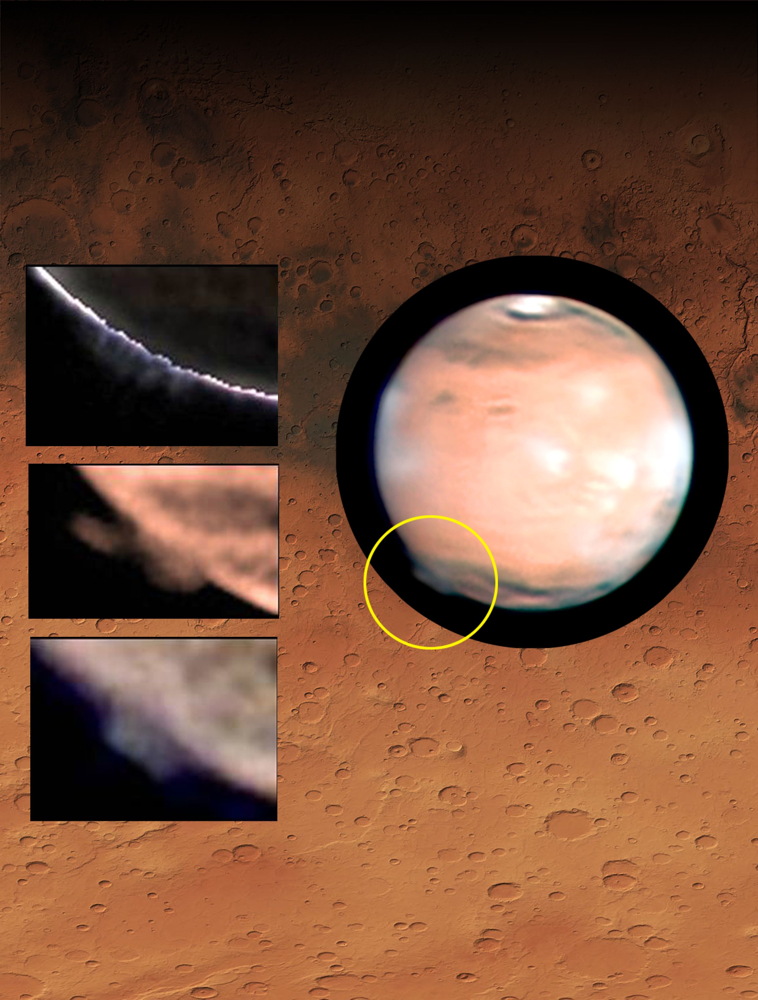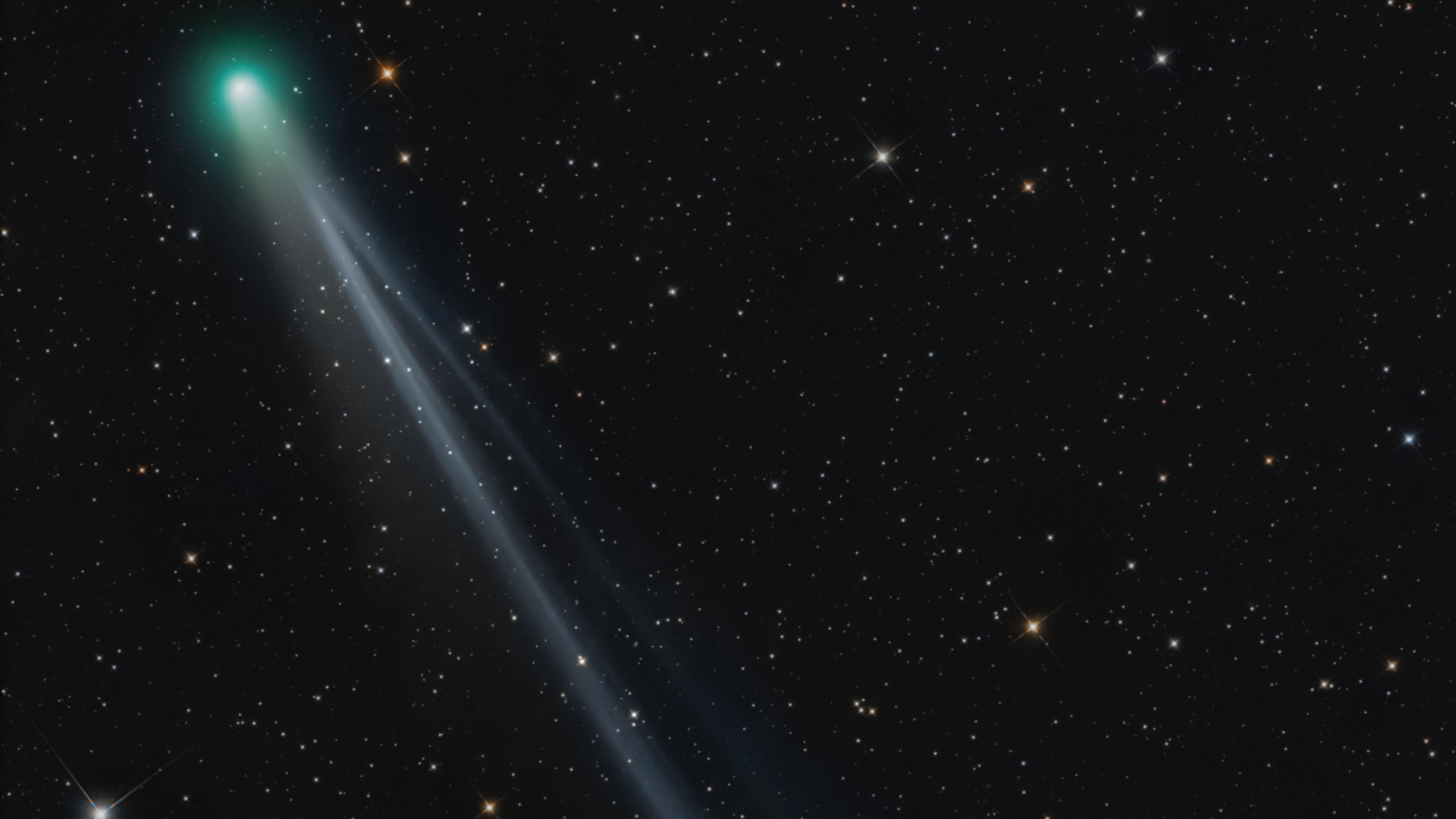Best Space Stories of the Week – March 1, 2015

Buzz Aldrin told some members of the U.S. Senate that the country should commit to establishing a Mars colony, astronomers discovered the most gigantic black hole yet known and Leonard Nimoy — Mr. Spock from the beloved "Star Trek" series — passed away at the age of 83. Here are Space.com's pics for the top space stories of the week.
Buzz Aldrin to senators: US needs a Mars colony
The United States must establish a permanent manned presence on Mars if it wants to continue as a leader in the field of space exploration, former moonwalker Buzz Aldrin told senators on Feb. 24. Going to Mars without setting up a colony — launching only round-trip manned missions, in other words — would not be enough, nor would setting up human outposts on the moon, Aldrin said. [Full Story: US Needs a Mars Colony, Buzz Aldrin Tells Senators]
Biggest-ever black hole spotted
Astronomers have discovered the largest and most luminous black hole ever seen — an ancient monster with a mass about 12 billion times that of the sun that dates back to when the universe was less than 1 billion years old. It remains a mystery how black holes could have grown so huge in such a relatively brief time after the dawn of the universe, researchers say. [Full Story: Monster Black Hole Is the Largest and Brightest Ever Found]
Goodbye, Leonard Nimoy
Actor Leonard Nimoy, who portrayed the iconic logical Vulcan Spock on TV's "Star Trek" and in feature films, has died at the age of 83. Nimoy died from complications due to "end-stage chronic obstructive pulmonary disease," according to the New York Times. [Full Story: Leonard Nimoy, Spock on 'Star Trek,' Dies at 83]
Breaking space news, the latest updates on rocket launches, skywatching events and more!
Another test flight for European space plane in the works
The manager for the European Space Agency's Intermediate eXperimental Vehicle robotic minishuttle is getting ready for the program's next test flight in 2019 or 2020. IXV performed its first uncrewed space test on Feb. 11, launching to space and then landing in the ocean 100 minutes later. [Full Story: Europe's Newly Tested Space Plane Aims for Next Launch in 2019]
Space tourism company makes record-setting flight
The Arizona-based company World View, which aims to send customers to the edge of space in a balloon beginning in 2016, broke a record on Feb. 20, flying a parafoil to an altitude of 102,200 feet (31,151 meters). [Full Story: World View Makes Record-Setting Parafoil Flight from Near Edge of Space]
NASCAR on the moon?
Astrobotic and Hakuto — two teams competing in the Google Lunar X-Prize — have teamed up to get to the surface of the moon by the end of next year, potentially sowing the seeds for a sort of lunar NASCAR race. [Full Story: 'NASCAR on the Moon': 2 Teams Partner in Private Moon Race]
Should we try to contact ET?
For more than 50 years, scientists have been scanning the heavens for signals generated by intelligent alien life. The search has returned no conclusive results thus far, so some researchers are advocating that we beam out signals designed to catch aliens' eyes as well — but other scientists think this "active SETI" strategy could be dangerous. [Full Story: Should Humanity Try to Contact Alien Civilizations?]
The unsolved mystery of 'golden stars'
Astronomers have discovered mysterious "golden stars," which pulsate in a way that recalls the famous golden ratio, also known as the divine proportion. Although these stars were spotted during a search for an extraterrestrial galactic Internet, the researchers say intelligent aliens have nothing to do with their flickering patterns, as far as they can tell. [Full Story: 'Golden Stars' Flicker in Patterns That Da Vinci Would Love]
Another odd bright spot seen on dwarf planet Ceres
New photos captured by NASA's Dawn spacecraft, which is scheduled to arrive in orbit around Ceres on the night of March 5, show that a puzzling bright spot within a large crater on the dwarf planet's surface has a buddy of sorts. [Full Story: Mystery Spot on Dwarf Planet Ceres Has Mysterious Partner (Photos)]
Grand 3D view of the deep universe
Astronomers have just released a brand-new, best-ever 3D view of the deep universe, and it's a doozy. The amazing new photo, released by the European Southern Observatory on Feb. 26, reveals never-before-seen cosmic objects in a relatively small patch of sky. [Full Story: Best 3D View of Deep Universe Reveals Astonishing Details (Video)]
Piece of SpaceShipOne zooming to Pluto
A small piece of spaceflight history will zoom through the Pluto system on July 14 aboard NASA's New Horizons probe. Inside New Horizons is a piece of SpaceShipOne, the first privately owned and operated manned spacecraft to reach space twice within a 14-day span. That 2004 feat bagged the SpaceShipOne team the $10 million Ansari X Prize, which was designed to spur the development of the private spaceflight industry. [Full Story: NASA Probe Bound for Pluto Carries Piece of Pioneering SpaceShipOne]
Follow Mike Wall on Twitter @michaeldwall and Google+. Follow us @Spacedotcom, Facebook or Google+.
Join our Space Forums to keep talking space on the latest missions, night sky and more! And if you have a news tip, correction or comment, let us know at: community@space.com.

Michael Wall is a Senior Space Writer with Space.com and joined the team in 2010. He primarily covers exoplanets, spaceflight and military space, but has been known to dabble in the space art beat. His book about the search for alien life, "Out There," was published on Nov. 13, 2018. Before becoming a science writer, Michael worked as a herpetologist and wildlife biologist. He has a Ph.D. in evolutionary biology from the University of Sydney, Australia, a bachelor's degree from the University of Arizona, and a graduate certificate in science writing from the University of California, Santa Cruz. To find out what his latest project is, you can follow Michael on Twitter.
